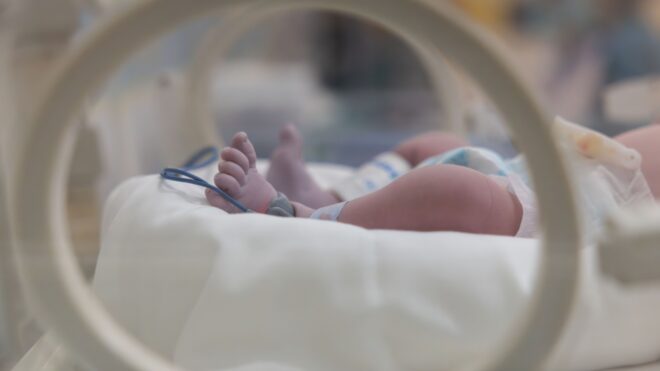My daughter at 13 weeks gestation — can you tell?
Finding out the gender of the baby is one of the biggest things many families look forward to during pregnancy, whether they have a preference or not. Most average pregnancies under OB/GYN care in the United States undergo two ultrasounds — one at the end of the first trimester, around 9-13 weeks, and another at the end of the second trimester, around 18-22 weeks, the latter being the "gender ultrasound". But what if you could find out the baby's gender at that first ultrasound, and NOT because you can see baby's family goods? According to one theory, you can!
The Ramzi method (or Ramzi theory) claims an unborn baby's gender can be predicted accurately at just six weeks gestation by studying the placement of your placenta. According to the method, if your placenta is forming on the right side of your uterus during that first ultrasound, you're most likely having a boy. If it's forming on the left side, you're most likely expecting a girl.
The research behind the method was published on ObGyn.net, though the paper has since disappeared from the site. The science claimed the Ramzi method was tested on more than 5,300 women using transvaginal ultrasounds when they were six weeks along in their pregnancies. Doctors recorded the location of the placenta and predicted each baby's gender. Then, transabdominal ultrasounds (the one on your belly) were performed on each of the woman at 18-20 weeks, and their method of gender determination was right 98-99 percent of the time!
More from CafeMom: Quiz: Are You Having a Boy or a Girl?
Like most DIY methods of determining a baby's sex, the Ramzi method appears to be more for fun than 100 percent fact. The American Congress of Obstetricians and Gynecologists (ACOG) don't recognize it as a proven method, and a piece on Baby Center expresses doubt about the method's accuracy, since the research was pulled down and the site it appeared on does not require studies to be peer-reviewed. Still, that hasn't stopped dozens of moms from trying it out themselves and even claiming it totally works. One woman on the Baby Center message boards even created her own chart to track predictions other users made using the method and see which ones turned out to be right. Based on her experiment, it was accurate 47 times and incorrect only 27 times.
I tried to look at ultrasounds of mine and many of my friends, but I'm no radiologist, so I'm not quite sure where the placenta is, especially in some of the less clear images. Apparently if your first ultrasound was transabdominal, the image is flipped, so you'd reverse the sides. Whether it works 100 percent of the time or not, it's certainly a fun game in which to channel all of your anticipation until you can finally find out what you're having.
Get out your ultrasounds, ladies!




